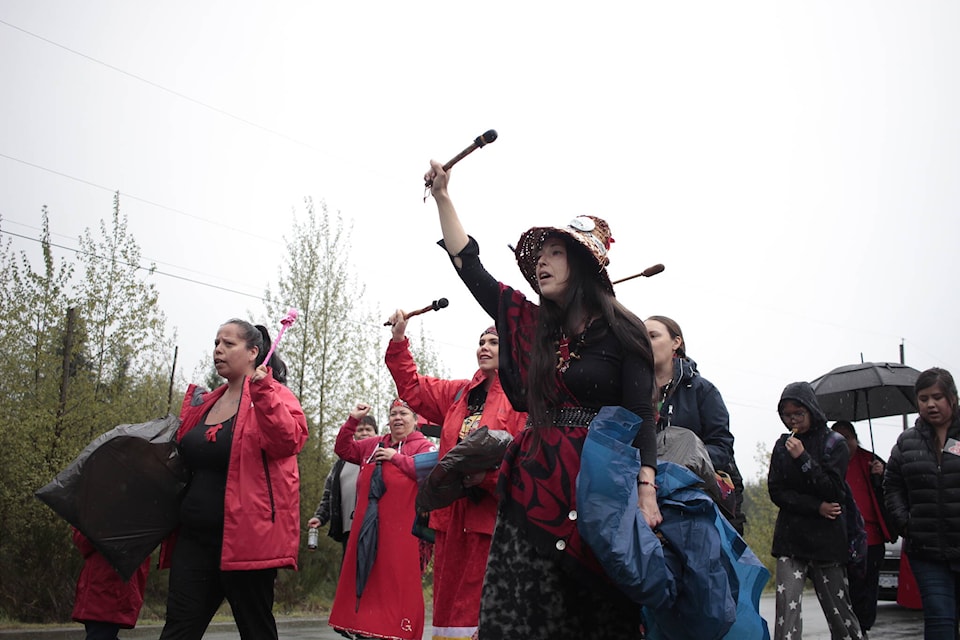All week, generations of women from the Homalco First Nation gathered to make red dresses to help commemorate family members who were murdered or went missing over many years.
In the rain on May 5, the women walked through the community, drumming and singing, to hang the dresses in trees along the road into the Homalco Reserve.
“When you see the red dresses up in the trees, it sheds a whole new perspective on the issue,” said Fay Blaney, a Xwemalhkwu (Homalco) woman and founding member of the Aboriginal Women’s Action Network. “We here in Homalco have been subjected to a lot of violence. We have our grandmothers and great grandmothers that have either been murdered or have been disappeared from the history books. So that’s why we’re quite passionate about doing this.”
The event was started 13 years ago by Jaime Black, who is of Anishinaabe and Finnish descent, but Blaney said that the history of violence against Indigenous women goes back much further than that.
She listed many women who are either Homalco members, close friends, or loved ones who have been affected by violence. Whether it was Blaney’s own great grand-aunt, who was murdered in Vancouver in 1952, or Chantel Moore, a member of the Tla-o-qui-aht First Nation killed by New Brunswick police officer Jeremy Son, but had friends and a relationship with people living in Homalco. Son was not charged after the shooting.
“It gives you an education of how long we’ve been trying to break the silence and bring attention to this issue,” Blaney said. “Each woman here that has made a dress has made it with someone in mind.
“It was so healing for us,” she continued. “My daughter… made a dress for my little sister. I have a two-year-old little sister that died in a house fire. The levels of violence against us is gradually being uncovered and what has been done to us in the colonization process. That was an impact of colonization that we were in substandard housing.”
On the tables in one of the rooms at the Homalco Health Centre, there were bits of red fabric, craft supplies, glue, pens, markers and more, all evidence of the past week’s work. The women had been at their task since May 2.
“We’ve lost at least five young women to the overdose crisis and we’re very small community, when you think about how small we are in experiencing that level of overdoses and check such a short span of time,” Blaney said. “It’s just really overwhelming.”
Despite their hardships, which include everything from the opioid crisis to the impacts of COVID-19, the women in Homalco kept their spirits up.
“We have a long way to go in our healing journey,” Blaney said. “There’s just been so much done to our people and yet we’re still here and the women are still laughing.”
RELATED: ‘We are in a crisis’: Red Dress Day honoured as leaders say more work to be done
marc.kitteringham@campbellrivermirror.com
Like us on Facebook and follow us on Twitter
